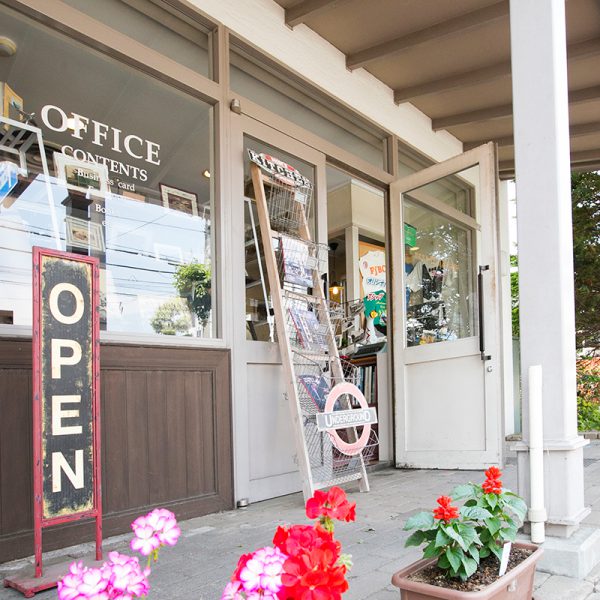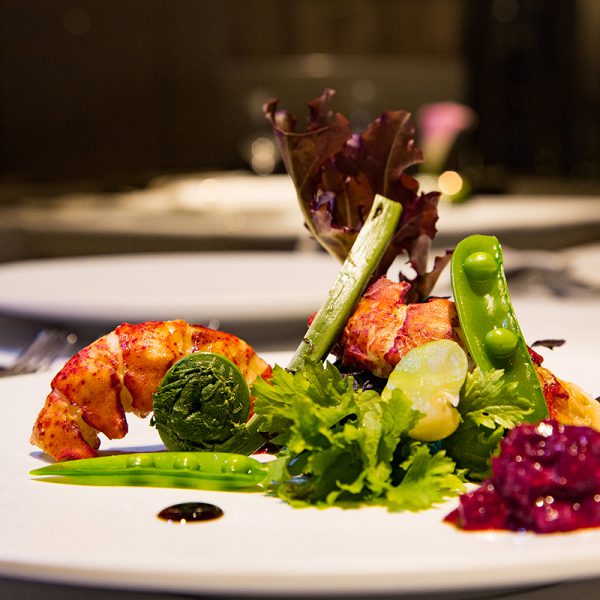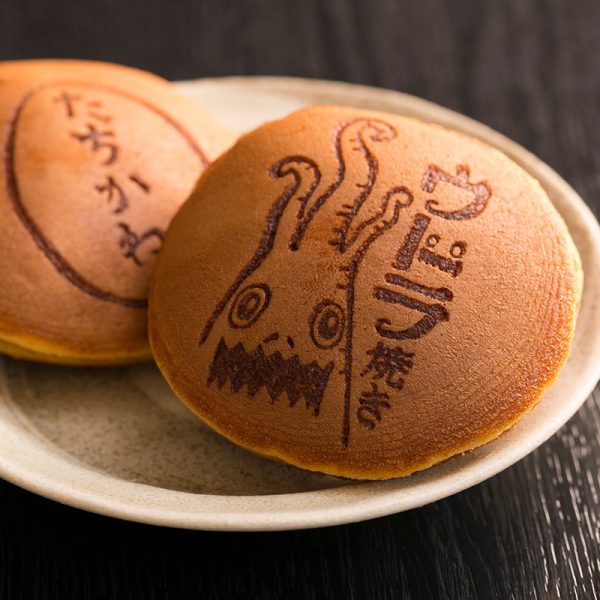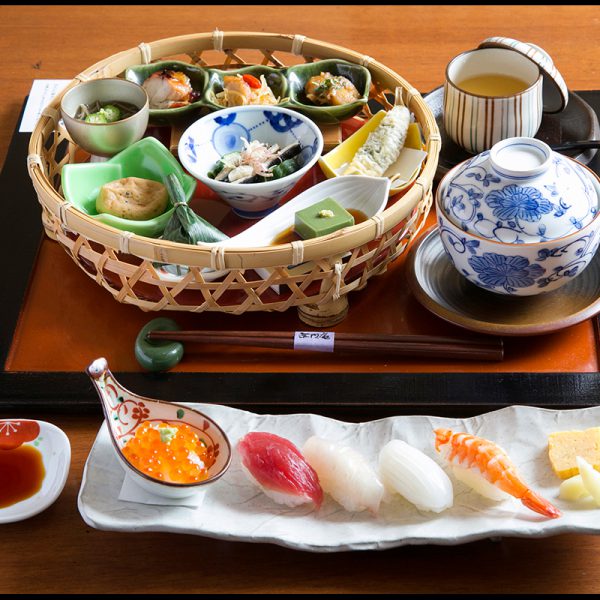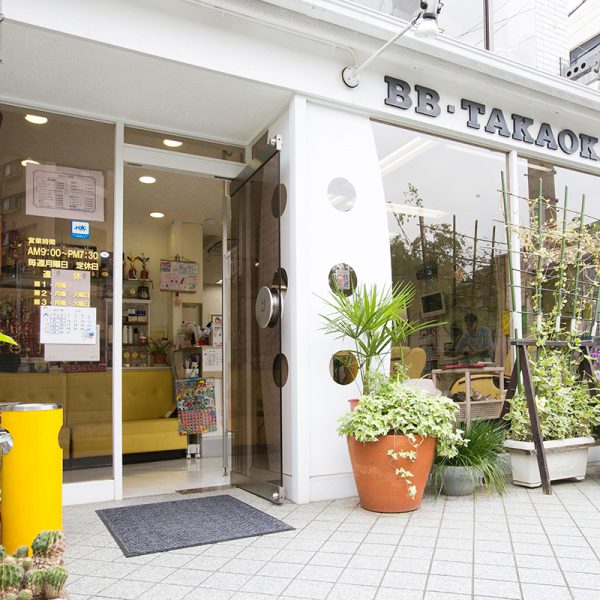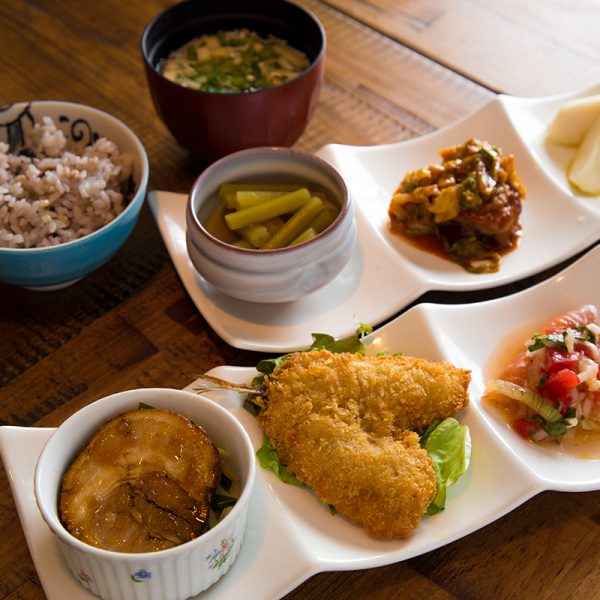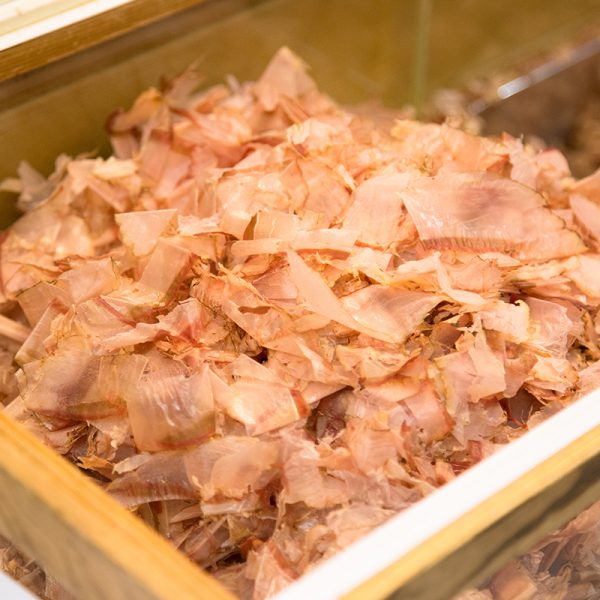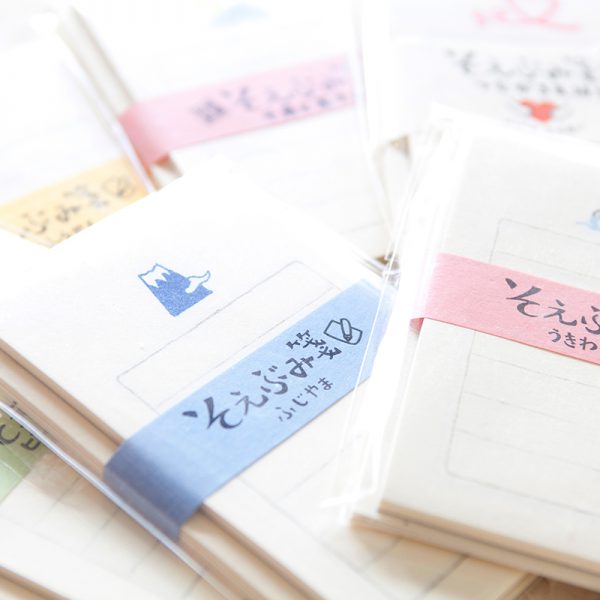MENU
 The recipe of Ms. Yasuko Mikami, owner of the long-established Mikami Katsuobushi-ten founded in 1959.
The recipe of Ms. Yasuko Mikami, owner of the long-established Mikami Katsuobushi-ten founded in 1959.
On this special day,
Use a generous amount of freshly shaved katsuobushi
Mikami Katsuobushi-ten
You can make New Year dishes like Toshikoshi soba noodles and Ozoni (soup with mochi rice cakes) using Ichiban Dashi, a rich stock made from pure katsuobushi(bonito flakes), which is full of fragrance and umami.
Clear and rich Ichiban Dashi stock made purely from bonito flakes
Ingredients (makes about 800mL, 4 to 5 servingss)
Put 1L of water in a pot and bring it to boil.
Ms. Mikami’s New Year Ozoni Soup
Ingredients (2 servings)
Fragrant and savory ozone soup is ready!
If you want to enjoy the freshest mochi,
try the Iwai Noshimochi (celebratory mochi) from this Japanese confectionery shop with a long history
Tachikawa Iseya
We used mochi from Tachikawa Iseya for the Ozoni recipe. Their mochi is made from sticky rice from Niigata, pounded and shaped by hand in the traditional way. Their mochi is characterized by its stretchiness and texture, on top of its delicious flavor. The lines sliced into the mochi makes it easy to cut it apart. Since there is no preservatives added, you should cut it apart and store them in the freezer if you can’t finish the whole thing. We usually make the order upon reservation, except from December 28th to 31st, when we sell them in front of our shop every year. Iwai Noshimochi, 3,456 yen (tax included).

Osechi Dishes, food to celebrate the New Year
Freshly made from New Year’s eve to ew Year’s morning
Café Restaurant Tekutaku
The owner, who has worked at various restaurants around Tokyo, cooks all his delicious osechi by hand. He makes no compromise, puts a lot of care into each dish, and believes that food tastes best when they’re fresh. This is why he only sells 20 sets of osechi. He also provides a delivery service for elderly customers living in the neighborhood.
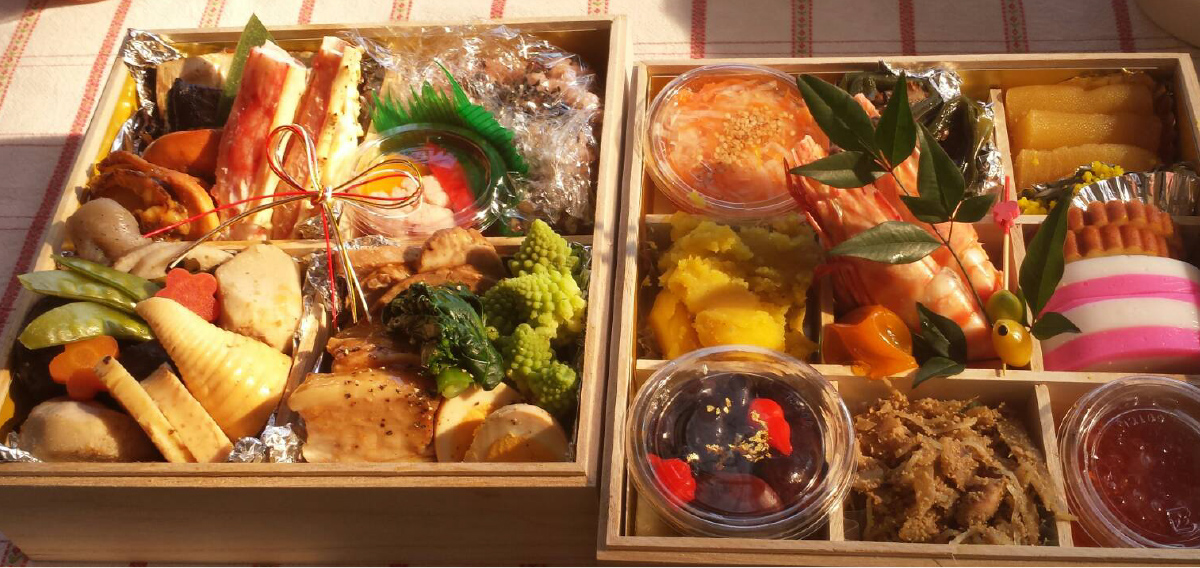
(Right: the first box) namasu (marinated vegetable), kobumaki (seaweed rolls), kazunoko (flying fish roe), kurikinton (chestnut confectionery), crab, shrimp, kumquat, datemaki (rolled omelet), kamaboko (fish patty), black beans, simmered dish, salmon roe
(Left: the second box) scallop teriyaki, yellowtail teriyaki, ego (mineral-rich seaweed, and local delicacy of the owner’s home town in Echigo), red bean rice made with koshihikari rice from Uonuma, yokan (red bean confectionery), simmered vegetables, roast pork, roast beef, black beans
2-box set, 16,000 yen (tax included)
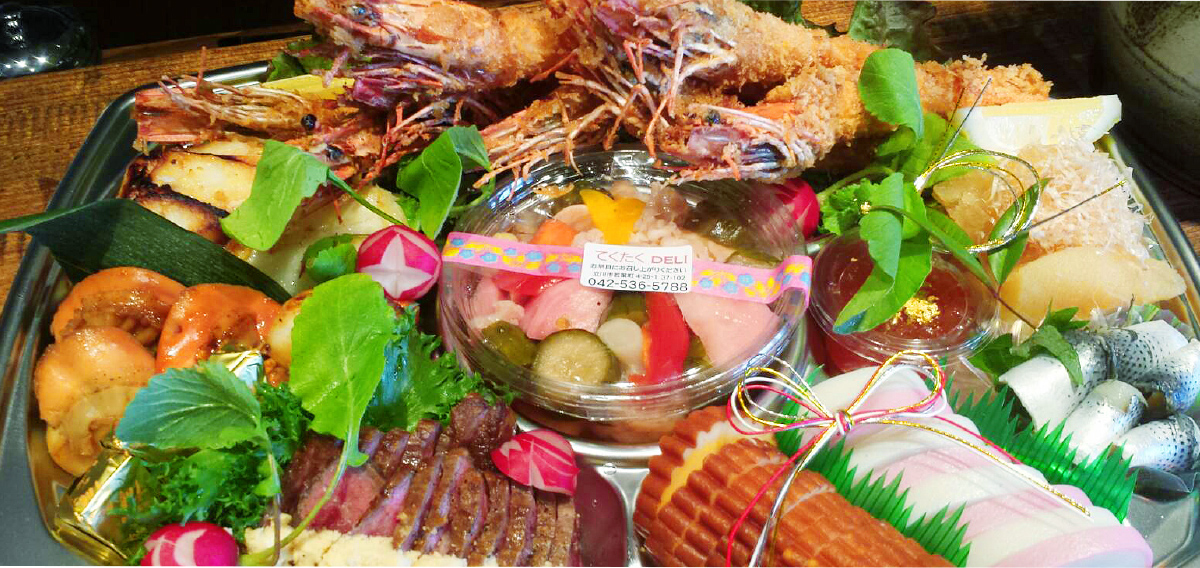
How about welcoming the new year with fusion hors d’oeuvre that pair nicely with wines and other drinks? Hors d’oeuvre can be prepared according to your budget.
Put together little by little
Osechi from a traditional ryotei made with meticulous care
Mumonan
At the beginning of a new year, a special meal colors the celebration. Made with extra time and care, their popular osechi items are full of flavors and vibrantly packed. Taste the tradition and skills of Mumonan, which has developed alongside Tachikawa since the Showa era.
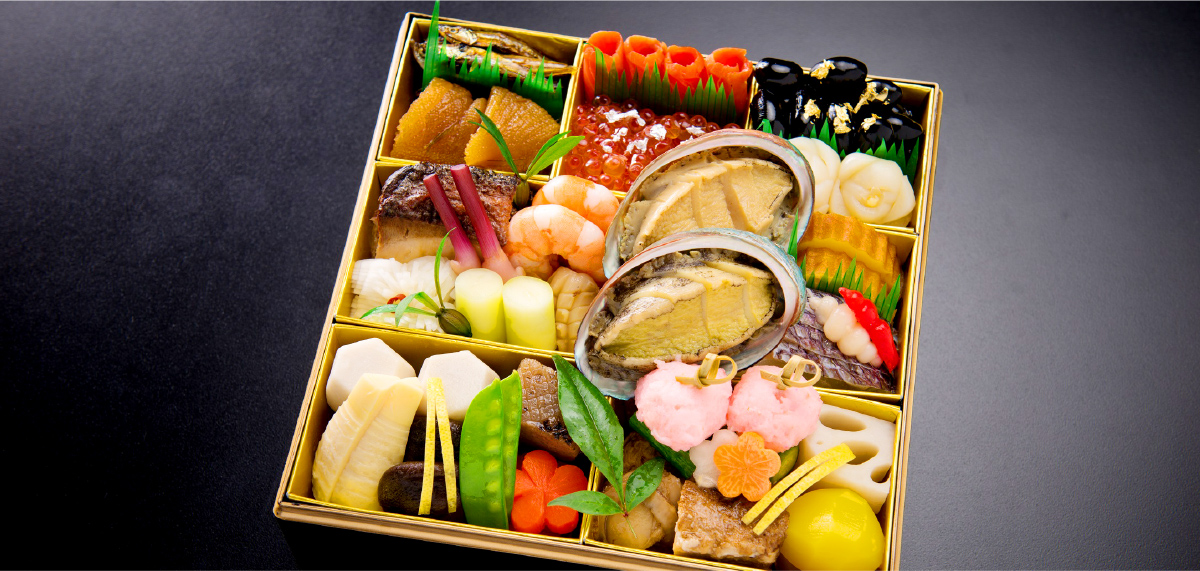
New Year’s osechi full of Japanese tradition. Single-box Kaiseki Osechi, 16,200 yen (tax included).
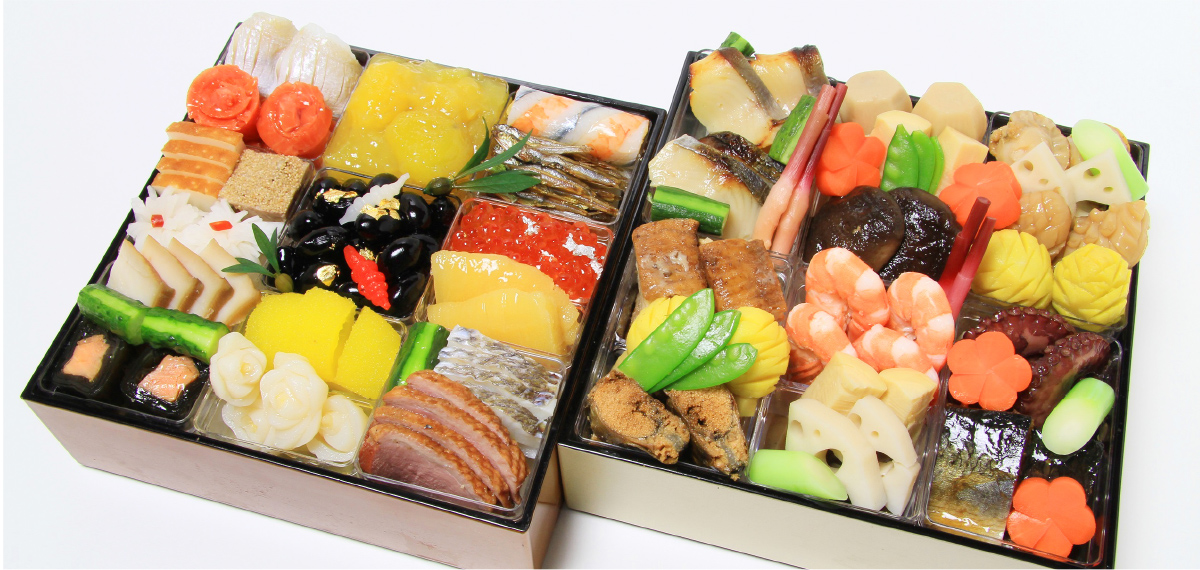
Two boxes of delicacies made with carefully selected ingredients and traditional techniques. Double-box Kaiseki Osechi, 32,400 yen (tax included)
Italian osechi
Made with luxurious ingredients
Tre Monte
They prepare traditional New Year’s dishes with an Italian twist to create their popular set of 21 osechi dishes. Packed in the first and the second boxes are hors d’oeuvres that pair nicely with wine, while main dishes such as chateaubriand, an A-5 grade beef fillet, and foie gras fill up the third box. Why not treat yourself to a luxurious meal for the New Year?
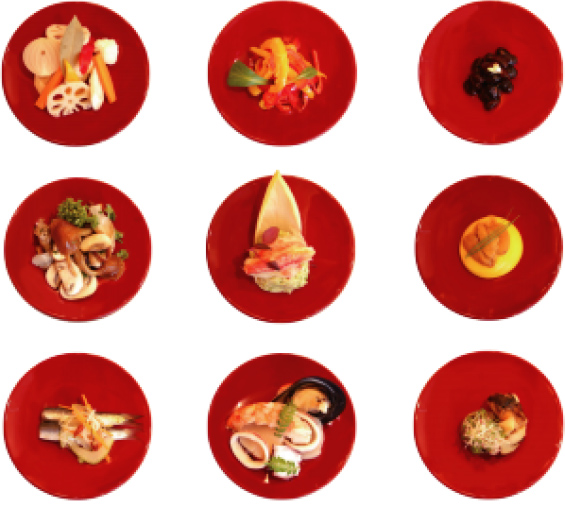
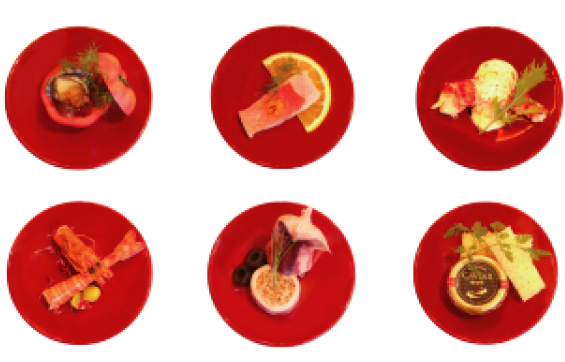
Three boxes (21 items), 32,400 yen (tax included).
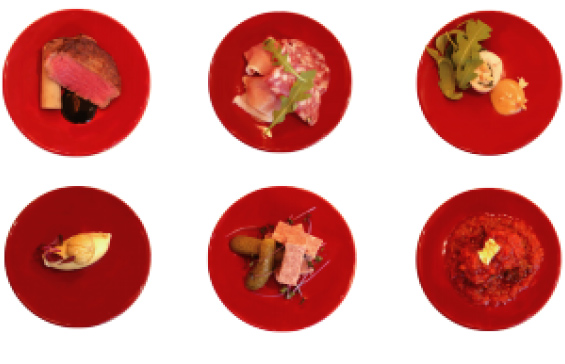

Get a hair and facial makeover!
Welcoming the New Year all refreshed
BB.TAKAOKA
“Many customers get their hair cut or colored before the New Year. We recommend a facial shave which makes your face look brighter. A head spa is also nice for those who are concerned about their scalp condition and itching. It cleans the pores, relaxes stiff necks and eye fatigue, and boosts blood circulation (30-minute carbonated head spa, 3,240 yen ). We also provide kimono-dressing and hair arrangement. Come by any time.”
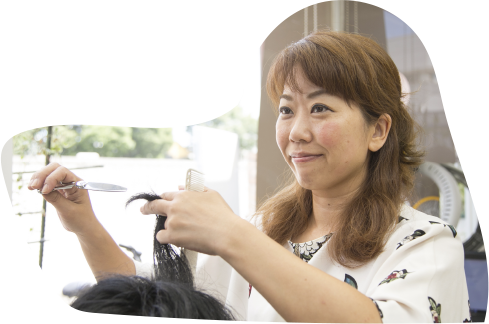
BB.TAKAOKA’s third-generation owner Yuko Arah is the master of hair and makeup arrangements.
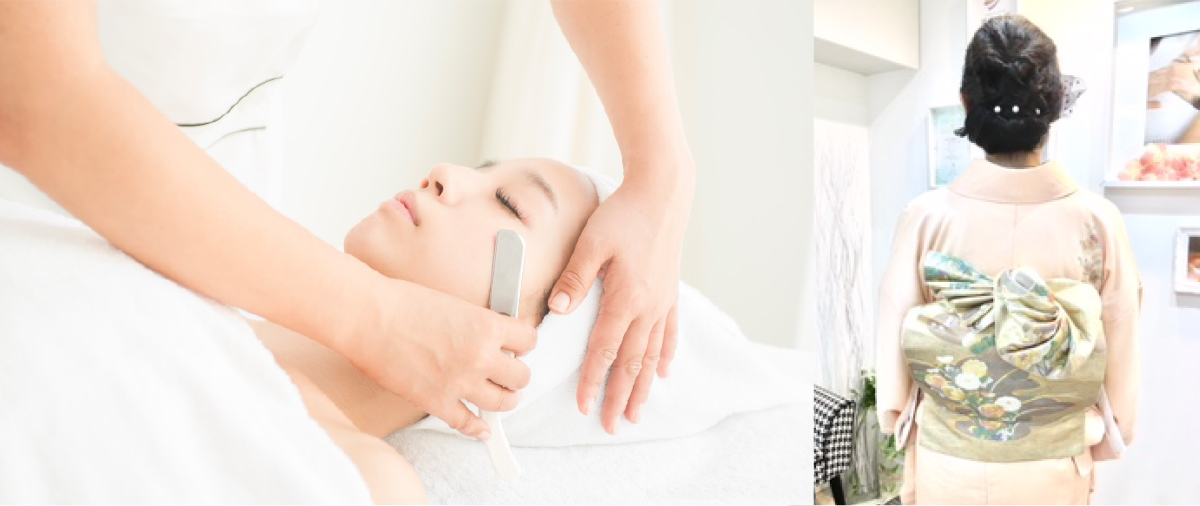
B.B.TAKAOKA also has an esthetic menu. Why not get a beautiful makeover for the New Year? The first-time trial plan is 5,500 yen for 70 minutes. Other services include a moisturizing course that is popular in winter (30 minutes, 3,780 yen), and whitening & moisturizing course (40 minutes, 4,320 yen). ※ There is a private room for women ※ Prices include tax

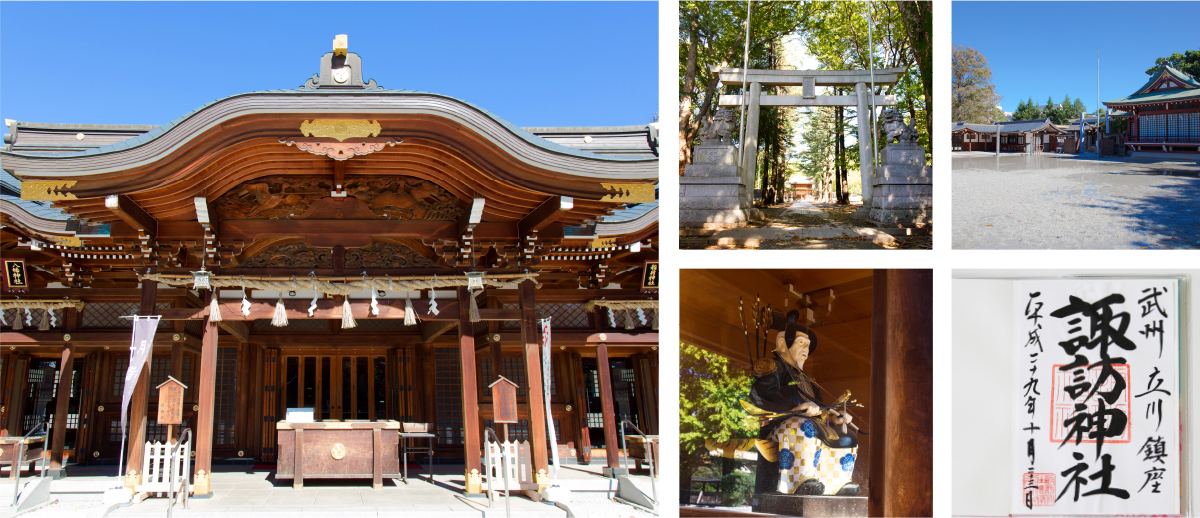
The city’s power spot, “O Suwa-sama”
Suwa Shrine
A 10-minute walk from Tachikawa Station South Exit and away from the bustle of the station, Suwa Shrine stands next to Suwa no Mori Park, which used to surround the shrine. The shrine was founded about 1,200 years ago, after the divine invitation of Shinsu Suwa Taisha to this location. Since they enshrine Takeminakata-no-Kami, known as the god of victory, many visitors crowd the shrine to wish for victory in competition and business prosperity every New Year.
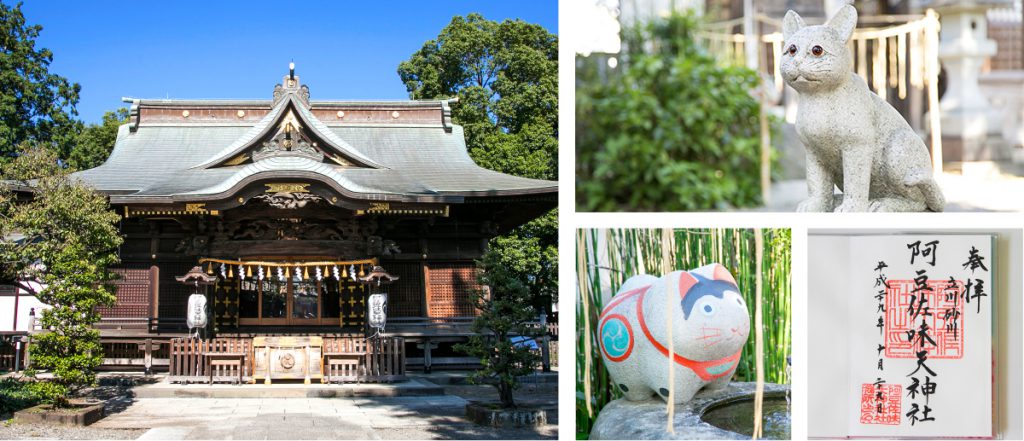
A Shrine Adored by Cat Lovers
Azusami Tenjinsha
The shrine was founded in 1629 as the village’s patron god when they developed the Sunagawa Nitta district. The main hall is the oldest building in Tachikawa City, and designated as the city’s Tangible Cultural Asset. Though it may be small, the shrine is filled with quiet presence. Also known as Tachikawa Suitengu (patron of successful childbirth), many come here to pray for their children, especially on Dog Day (for childbirth) and the Shichigosan Festival, a rite of passage for children aged 7, 5, and 3. It has been nicknamed the “Cat Return Shrine” and has been attracting those who pray for the safety and return of their beloved lost cats in recent years.

A shrine deeply respected by residents since the Edo period
Kumano Shrine
The shrine was founded in the Edo era, as a guardian of seven settler families who called themselves Shibasaki Nitta. After being destroyed in an air raid in 1945, the spirit from one of the three main Kumano Shrines in Mie prefecture came to serve here from 1956 until today.

